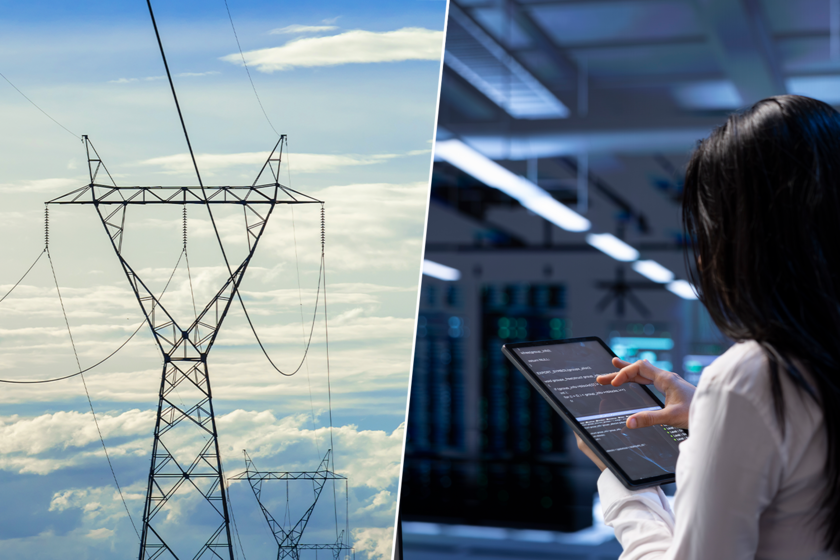Everywhere we look, there is artificial intelligence. Everyone talks about it, but what is its fuel? It’s not the data or the chips: it’s the electricity. While in the West technology companies are looking for how to power their data centers – increasingly hungry for energy – China has decided to take a different step. Beijing has designed an energy subsidy for its technology sector with a clear objective: to make the energy that powers the digital brains of its next generation of chips cheaper.
Energy subsidy. Since September, the Chinese government prohibited major national technology companies – including Alibaba, ByteDance and Tencent – from acquiring artificial intelligence chips from the American company Nvidia, in an attempt to strengthen local production.
However, the consequence was immediate: national processors consume more electricity. According to The Chosun Daily, generating the same number of tokens with Chinese chips requires 30% to 50% more energy than with Nvidia’s H20, which sent electricity bills skyrocketing and led companies to complain to regulators.
To make up for that gap, local governments introduced subsidies that cover up to a full year of operating costs, according to Hong Kong media on.cc. In those provinces, industrial electricity was already 30% cheaper than in the developed coastal areas of the east, but with the new incentives the Price could fall to 0.4 yuan per kilowatt-hour, a record figure for the Chinese technology industry.
¿How does the energy plan work? The scheme is relatively simple, but strategic. Local governments offer electricity discounts of up to half to data centers that use chips produced within the country. Operators that use foreign processors – such as those from Nvidia or AMD – are excluded from the program.
In addition, the energy provinces receive direct support from the State to finance the discounts, with the aim of reducing dependence on technological imports and compensating for the increased consumption of local chips. According to the Financial Times, Chinese data centers that rely on domestic semiconductors are, for now, less energy efficient, but the subsidy seeks to bring their costs in line with those of the most advanced foreign chips.
These regions—Guizhou, Gansu, and Inner Mongolia—have become hotbeds for data center clusters, thanks to their abundance of hydropower and coal. There, companies like Alibaba or Tencent are building new facilities to house their generative AI models, taking advantage of lower energy costs and tax incentives. This policy combines three strategic priorities: making energy cheaper, promoting domestic chips and reinforcing technological sovereignty. In a context of United States restrictions, each subsidized kilowatt is also a political statement.
An industrial policy with a geopolitical charge. Behind the energy plan is a long-range political commitment. The Chinese Government intends for its technology companies to progressively replace imported chips with domestic processors, even if this implies higher costs in the short term. The electricity subsidy acts as a temporary bridge for national giants to adopt local chips without losing competitiveness. This measure is part of a broader national strategy of technological self-sufficiency.
As the Financial Times explains in its series The State of AIChina is using its “society-wide mobilization capacity” to accelerate the development of artificial intelligence. The country already leads the number of patents and scientific publications in AI, and although the United States maintains an advantage in chips and talent, the gap narrows every year. Analyst Dan Wang, quoted by the same media, points out: “China has achieved a unique balance between engineering capacity, state control and massive industrial deployment, allowing it to advance faster than other countries in the practical application of AI.”
Meanwhile, in the West… China’s decision contrasts with the energy challenges of the United States. Microsoft CEO Satya Nadella warned that the real bottleneck for AI is no longer chips, but energy. In fact, he explained that many companies accumulate chips that they cannot connect due to lack of power supply. Both Microsoft and Google are already studying building modular nuclear reactors to power their future data centers, a sign of the enormous energy consumption that artificial intelligence requires.
While Silicon Valley seeks electricity, China subsidizes it. This asymmetry reflects two different models: one guided by state intervention and the other by market competition. Both pursue the same goal—sustaining the artificial intelligence revolution—but with opposite philosophies.
A future plugged into the State. The Chinese subsidy not only alleviates costs: it redefines the relationship between the State and the private sector in the age of AI. As analyst Arnaud Bertrand observed, US restrictions pushed China towards a different model: more efficient, more open and more collective. “By operating under hardware limitations, Chinese companies have learned to optimize resources and share open models like Qwen or DeepSeek,” Bertrand wrote on the social network X.
That strategy, based on efficiency and diffusion, could give China a long-term advantage in global adoption, since any company in the world can download and adapt its models.
The country that controls the plug. China isn’t just making the chips that power its artificial intelligence. It is also building the electrical grid that makes them possible. In a world where data is the new oil, Beijing has decided to subsidize the fuel of the digital brain.
While the West debates how to connect its supercomputers, China plugs them in at a reduced price. And in this race, whoever controls the plug could end up controlling the future.
Image | FreePik and FreePik
WorldOfSoftware | The world of AI has a problem: there is no energy for so many chips











